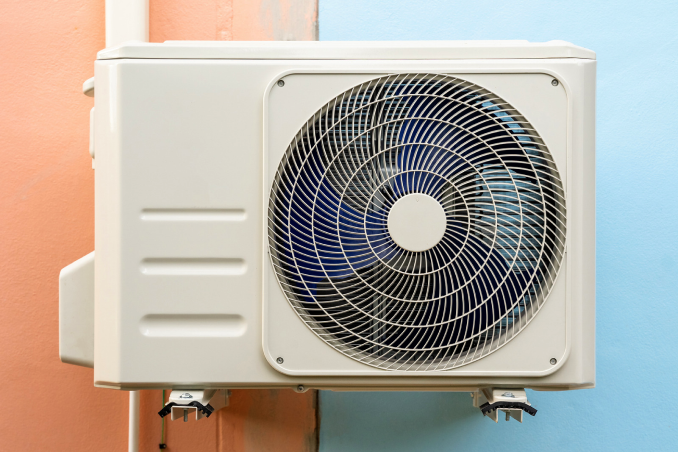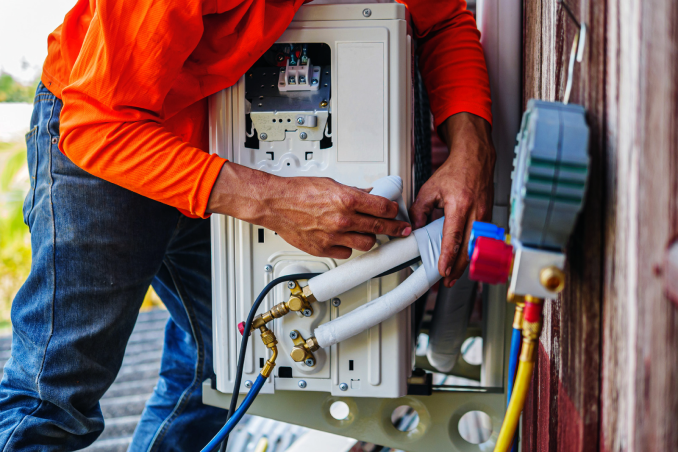Table Of Contents
Essential Parts And Components of Air Conditioning Systems: A Guide for Dummies
Last Updated on: November 16th, 2024
Do you want to install an air conditioning system on your property? Or do you think it is time to call someone like Call The General to replace your old unit? Before you install a new system or replace your old one, it is important to go through an Essential Parts and Components of Air Conditioning Systems Guide.
An Overview Of Essential Parts And Components Of Air Conditioning Systems Guide

Whether you own a business or a residential property, you must always seek detailed information about installing an air conditioning system. This will help you to ensure your system is in the right condition and you take proper care of it.
More importantly, when you have some knowledge of how an air conditioning system works and what its components are, you will know right away what is wrong with the system. If not, at least you will have a better idea if anything seems out of place.
As a result, you can call an expert to do a check-up as soon as possible.
With continuous technological progress, air conditioning systems are constantly getting new upgrades. Therefore, you might find it overwhelming to keep track of every part. However, most air conditioning systems have the same basic components and parts as the older ones.
Hence, having a basic idea of the components will help you find flaws. Thereby, you will at least be able to understand if anything goes wrong. This will let you call an expert and inform which part is not working (or malfunctioning).
Essential Parts And Components Of Air Conditioning Systems Guide
Here is the Essential Parts and Components of Air Conditioning Systems Guide that you need to be aware of:
1. Refrigerant

Every single refrigerator will have one thing in common with every single air conditioner: a refrigerant. Basically, the refrigerant is a special and unique fluid that circulates around and inside the coils of the unit or system.
Hence, it is a vital aspect of the operation of exchanging heat. Moreover, it allows units to exchange the heat from within the room or space with the outside. Furthermore, the refrigerant changes the state of the heat from a liquid into a vapor and vice versa. This helps it complete the cycle within the system.
2. Compressor

Every system or unit will also have a compressor. This item offers external pressure to the refrigerant. Thereby, it ensures that all the molecules are close enough to one another for liquification.
Moreover, the energy that the system needs to apply pressure to the refrigerant will come from the electric supply. So, if the compressor is not able to receive ample electricity (or a component within the compressor fails), then the unit or system will be unable to create cool air.
3. Thermostat

The thermostat is another necessary component of an air conditioning system or unit. The experts in air conditioning in Kent (such as Sub-Cool FM) confirm that.
Essentially, the thermostat is the control or command center of the system or the AC unit. With the help of it, the system gets the ability to regulate and control temperature.
With the help of the thermostat, the AC unit can outdoor temperature. Then, it compares this temperature against its set values. Thereby, it decides the best action to create a desirable indoor temperature.
In addition, you can define the set value with the help of remote control. In other cases, you can even tap buttons on the thermostat itself.
4. Evaporator Coils

Evaporator coils play an important role in the continuous operation of air conditioning systems. Generally, the primary components are steel, aluminum, or copper. This is because these metals have the ability to conduct heat easily.
Basically, the evaporator coil in the AC unit absorbs heat from the air. You will find it either in the AC furnace or inside the air handler. Both the condenser coil and the evaporator coil work together to perform heat exchange inside the air conditioning system.
5. Condensing Coils

All units and systems will also have condensing coils. Basically, they serve to expel heat that has been absorbed. Apart from that, condensing coils essentially prevent the refrigerant from retaining heat, and this helps keep the system working.
Wrapping Up
An air conditioning unit or system will have other parts and components that are vital to proper operations, and it is therefore important for it to be serviced and maintained regularly. Regular maintenance is key to prolonging the life of your air conditioning system or unit, and maintenance is recommended every six months.
Read Also:















